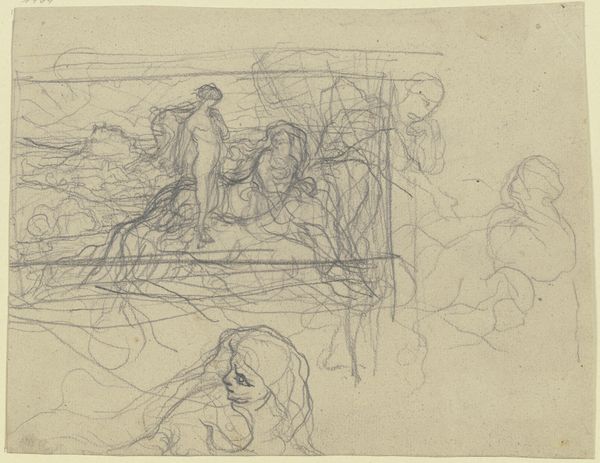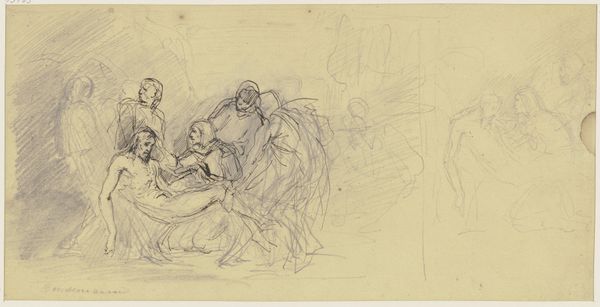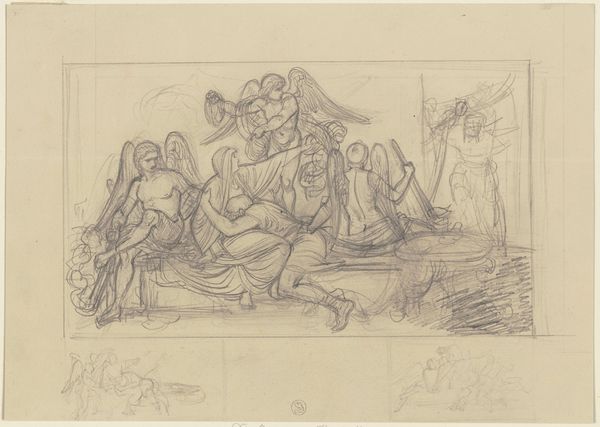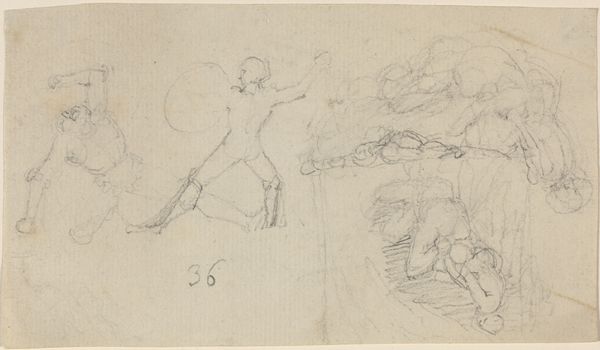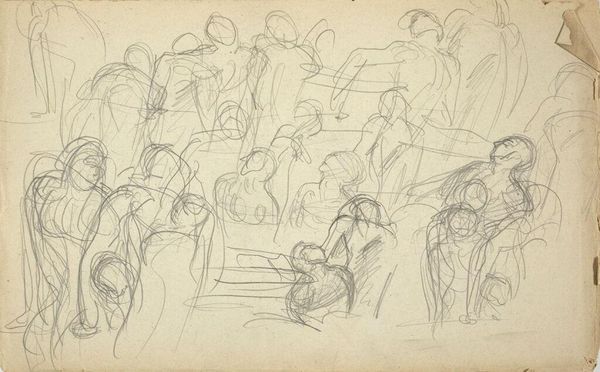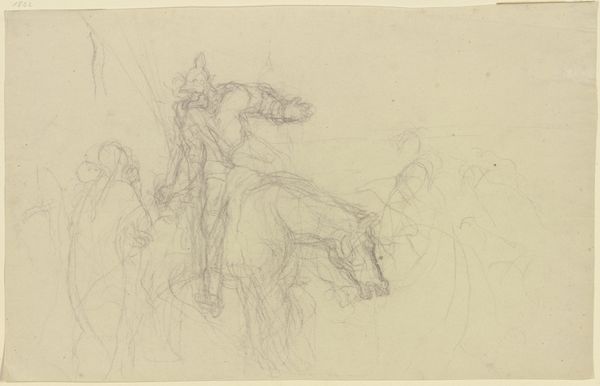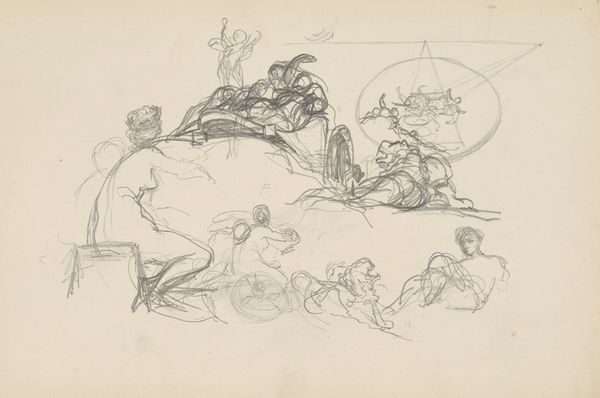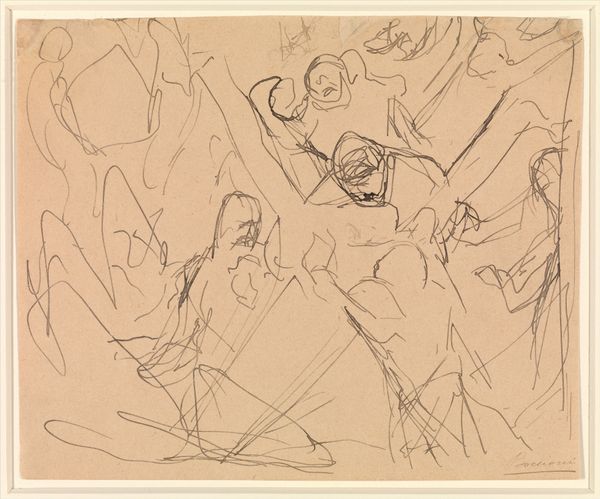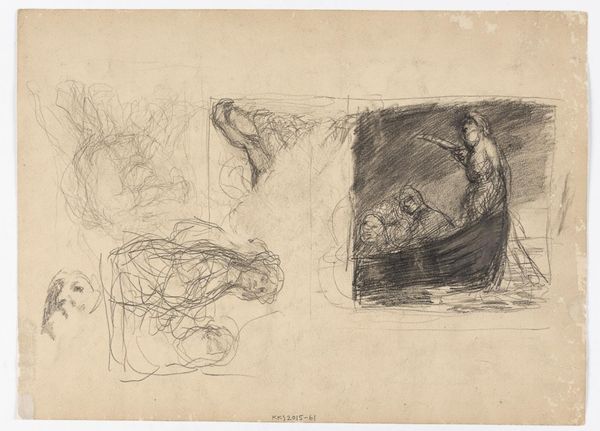
Studie für eine Dekorationsmalerei im Palais Bourbon c. 1833 - 1834
0:00
0:00
drawing, pencil
#
drawing
#
pencil sketch
#
figuration
#
romanticism
#
pencil
#
history-painting
#
academic-art
Copyright: Public Domain
Curator: Eugène Delacroix created this intriguing drawing, "Studie für eine Dekorationsmalerei im Palais Bourbon," around 1833-1834. It resides here at the Städel Museum. Editor: It’s wonderfully chaotic! So many figures, rendered with quick, almost frantic lines. I’m immediately struck by the dynamism, the sheer energy captured by such a simple medium – just pencil on paper. Curator: Indeed. Delacroix secured the commission to decorate the Salon du Roi in the Palais Bourbon, which houses the Assemblée Nationale in Paris, in 1833. This drawing represents one of his initial studies for the project. Academic art certainly required such preliminary exercises, though it’s a Romantic impulse toward heroic themes of history that motivates the piece itself. Editor: And the material reality of that heroic theme is interesting. Consider the labor involved, even in just this study: the cost of paper, the pencil, the sheer time spent rendering these figures. Was it Delacroix himself executing every single sketch, or were there assistants involved in the more rudimentary tasks? That division of labor affects how we interpret even these initial, seemingly spontaneous marks. Curator: That's an astute point. While Delacroix undoubtedly executed the initial concepts, assistants likely contributed to the less refined aspects, especially in large-scale decorative projects like this. The political context is also crucial; the Palais Bourbon, a site of power, adorned with images designed to inspire civic virtue. Editor: And who gets to define "civic virtue?" Looking at the muscular figures, I'm struck by the overt masculinity present. How might those choices – of subject, of physique – reinforce or challenge the existing power structures? This "history painting," it seems, actively manufactures a vision of the present as much as it depicts the past. Curator: Precisely! Delacroix uses history, as filtered through a Romantic lens, to reinforce certain ideologies, particularly concerning nationhood and leadership, that supported the then-ruling classes and shaped a specifically French identity in post-revolutionary France. Editor: Well, considering it’s a preparatory drawing, it’s interesting to see how even the means of production in art have cultural work to perform. What looks like casual preliminary work can offer profound insight into the political role and social construction of imagery, in a study destined to be a study. Curator: An incisive view. I see, perhaps, that Academic art and Romanticism, though seemingly disparate, are interwoven within the political realities of their time, shaped by both conscious intention and material constraint.
Comments
No comments
Be the first to comment and join the conversation on the ultimate creative platform.
